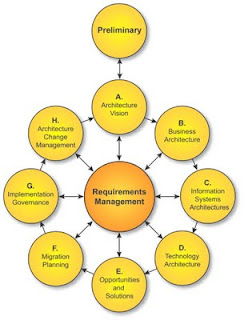Beat the typist: Robotic versus Intelligent Process Automation
Rotating wheels are destiny, in flame the city lies. Machines call out for followers far out into the night. The calls of the machines drowning in the steam.
(P-Machinery - Propaganda)
The vision that the band Propaganda created in the 80's, with humans operated as puppets, comes close to the fear a lot of people still have when we are talking about robotics and the automation of processes. Despite this fear, robots and robotics are hot and the technology is advancing so fast that it is hard to keep track. With this blog I will give a brief introduction to two trends that I consider as leading in current process automation:
1. Robotic Process Automation (RPA)
2. Intelligent Process Automation (IPA)
Robotic Process Automation (RPA)
According to the Institute for Robotic Process Automation (IRPA) "Robotic Process Automation (RPA) is the application of technology that allows employees in a company to configure computer software or a “robot” to capture and interpret existing applications for processing a transaction, manipulating data, triggering responses and communicating with other digital systems."
It is a collective term for tools and technologies that operate existing systems within an enterprise, almost like a human operator. The technology is booming and companies like BluePrism and Automation Anywhere are working together with system integrators like Accenture to deliver RPA solutions in different industries.
The advantages of this technology are very clear: it mimics the steps of an existing high-volume, highly transactional process without compromising the existing IT architecture. For comparatively low costs and in a short time period, organizations are able to get a tremendous reduction of operation costs while increasing accuracy.
Intelligent Process Automation (IPA)
Where RPA mimics a process on existing applications and systems, Intelligent Process Automation often (partially) replaces existing applications and systems and leads to processes that are designed to be performed automatically. Most of the software providers in this area have a background in the more traditional Business Process Management and/or Case Management, others are introducing new approaches that are less process-driven and more based on constraints (decisions, classifications and calculations). A good example is the Be Informed platform, which is used by immigration services in the Netherlands and the UK to automate parts of the intake process. Instead of mimicking process steps and operating existing applications, an Intelligent Process Automation system is integrated with the legacy systems and offers a process that is running independently on top of it.
Compared to RPA solutions, an IPA solution has far more impact on existing applications and systems and often comes with a higher price tag. The advantages of IPA are however that all processes are designed for automation from the start and are capable of changes in context because there are no predefined routs. Also, due to the fact that IPA systems do not depend on the performance of existing systems (SAP, Oracle, Siebel) they are capable of handling much larger volumes at the same time.
No verdict
RPA and IPA both have proven their value in the field and have offered us great opportunities to really help our clients reduce costs and improve accuracy. Both are often referred to as robotics, but it is important to understand that the technology behind them is completely different. Depending on the situation organizations can choose one over the other.
In my next blogs I will dive deeper into the world of robotics and intelligent process automation, linking it also to my ideas around contextual intelligence. In the meantime, don’t hesitate to reach out to me if you have a question or comment related to this topic.



Comments